Once Italian national team failed to obtain the qualification for the 1992 EURO, Federcalcio brought in legendary Milan’s head coach Arrigo Sacchi to lead Azzurri though the upcoming 1994 World Cup qualifying.
As usual, Sacchi took the job following his visionary path. It drew him criticism as he left home some notable and loved players such as Inter’s goalkeeper Walter Zenga or forward Gianluca Vialli of Juventus. Simply, all of them weren’t suited to play into Arrigo Sacchi’s 4-4-2 and also weren’t able to fulfil the requests that former Milan coach’s tactical approach required.
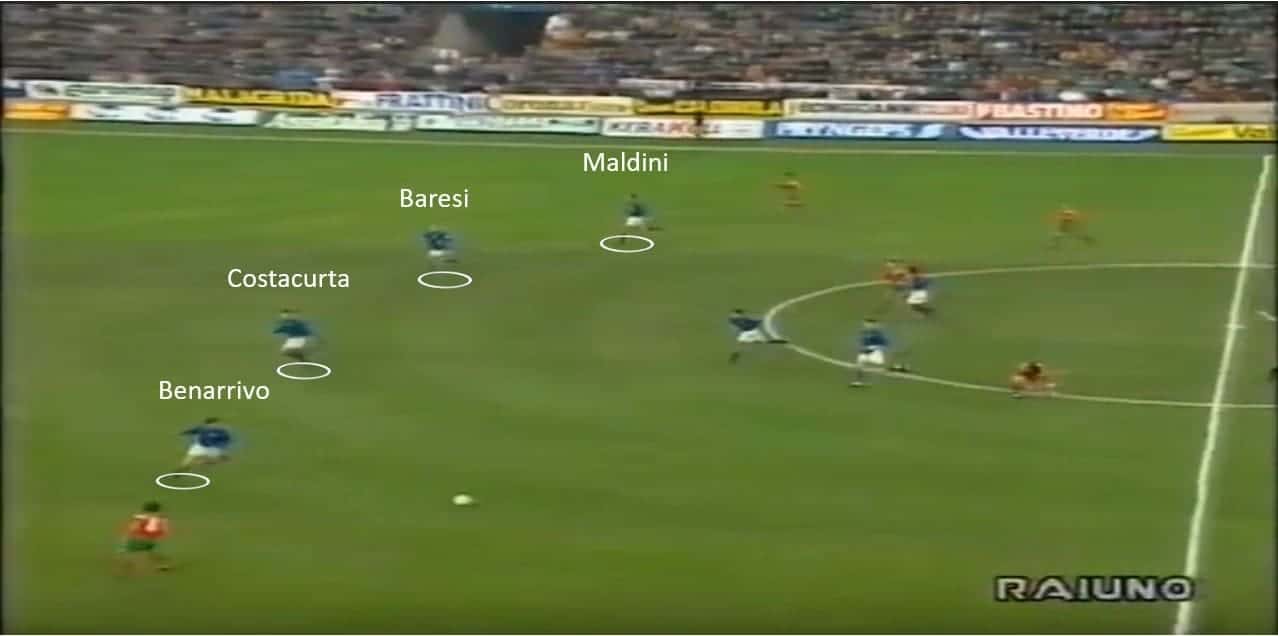
In fact, Sacchi’s football was highly demanding as he wanted his side controlling the game through ball retention whilst his players have to win the ball back as quick as possible through a continuous high pressure.
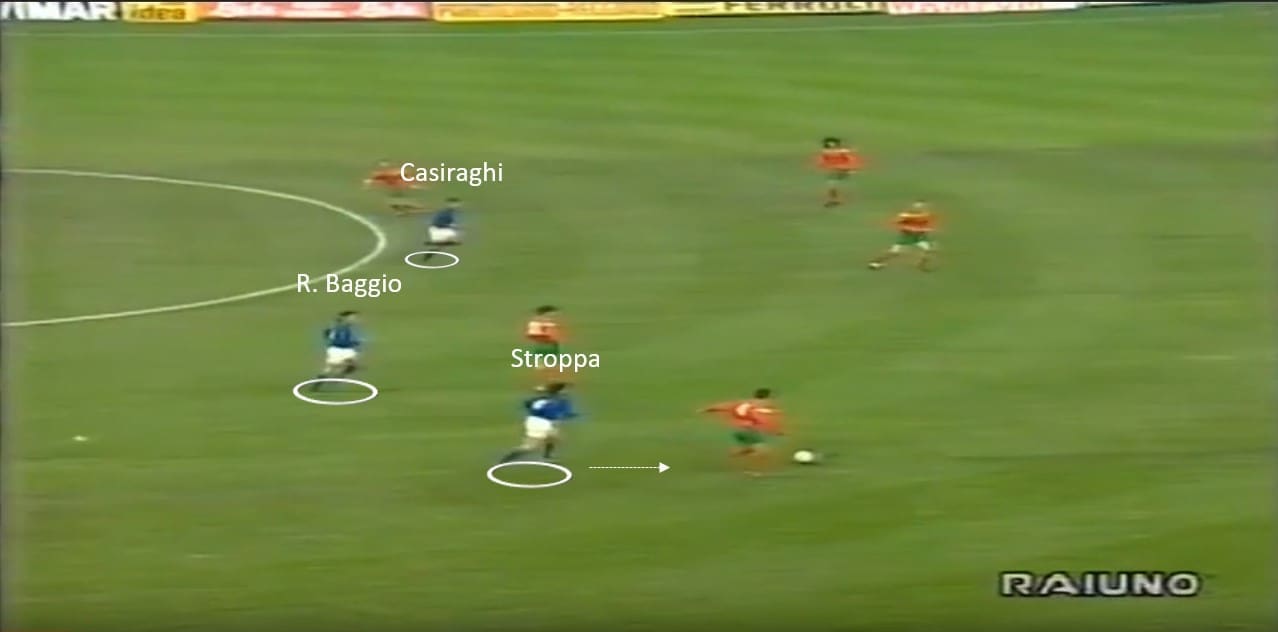
To reach this perfection peak, Sacchi constantly put emphasis on a daily basis work. He put his players through a lot of drills often involving all the squad working together. This method requires time to be assimilated by the players so Sacchi started to ask clubs to allow their players to reach special Azzurri’s training camps during the season while he also meticulously worked with them during the international breaks.
Sacchi and his coaching staff – which featured Carlo Ancelotti as assistant coach – thought of themselves as teachers more than simple coaches and they thought of Azzurri more as a club than a national team. It means that Sacchi trialled a lot of players during the period before the World Cup campaign, trying to install a lot of tactical concepts in order to force them thinking as a unit and not as a bunch of footballers coming from different clubs.
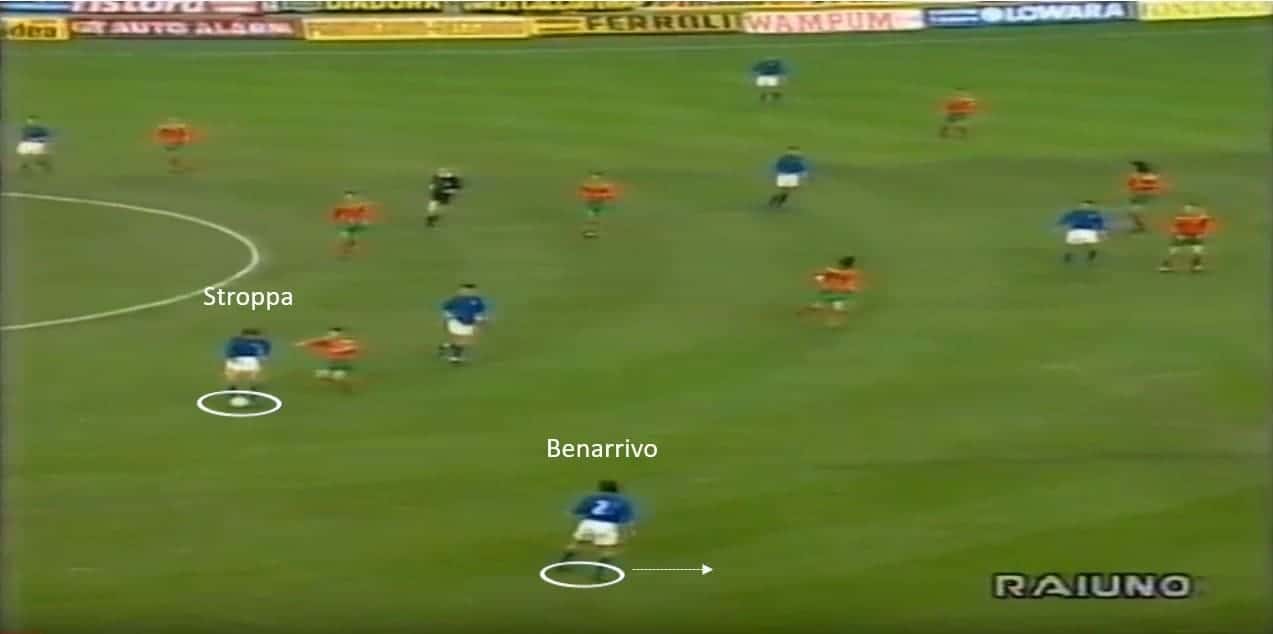
From a tactical point of view, Sacchi favoured a 4-4-2 shape, as mentioned before, but this system was fluid enough for those times. When in possession, it looked more as a 4-3-3 with one of the flankers – usually Giuseppe Signori, one of the best Italian goal scorers ever who Sacchi converted in a left-winger – reaching Roberto Baggio e Pierluigi Casiraghi up top.
Roberto Baggio’s role
Roberto Baggio was the key man over there. Despite the fact he enjoyed some degree of freedom into Sacchi’s tactical approach, the then Juventus’ player still had to roam around the final third of the field accordingly to team’s pattern. So, it was unusual to see Roberto Baggio dropping back to cover some passing lines or to pick the ball in between opposite’s lines.
Furthermore, Roberto Baggio linked midfield to attack either playing a pass to the outside or providing a through ball towards the other forward up front. Basically, Roberto Baggio acted as an attacking midfielder with the freedom to push higher up the final third to play as a forward himself.
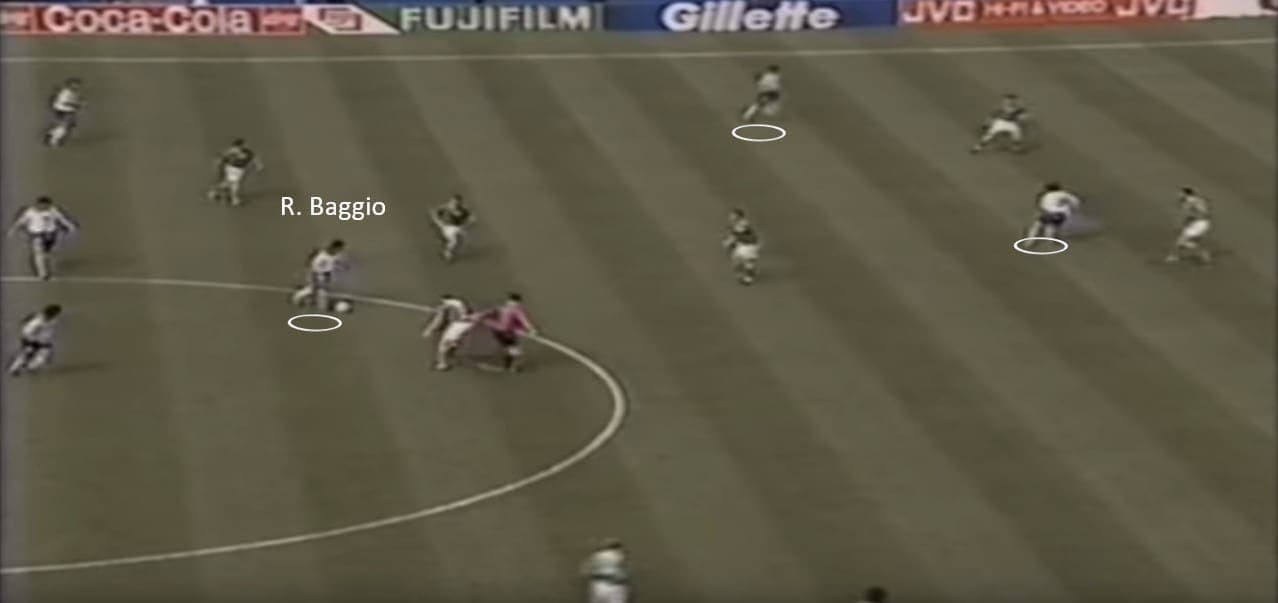
Roberto Baggio’s movement, mixed with other ones, generated multiple tactical patterns that allowed Italy to manipulate opposite’s defensive structure and compactness. These patterns usually ran through the wings, from where Italy was suited to attack or to start a change of play involving both no.6 and no.8 to reach the weak side or to directly attack behind the opposition’s backline.
Arrigo Sacchi’s defensive approach
Another key man into Italy’s offence was the veteran Franco Baresi. A former libero converted in a centre-back at Milan by the same Sacchi, Baresi was pivotal in Azzurri’s building from the back. He often received the ball from the goalkeeper, starting the process to get the ball out from the back through an outside pass towards the full-back or through a pass in the middle to central midfielders Demetrio Albertini or Dino Baggio. It created a triangle featuring Baresi and the near full-back and central-midfielder. But Baresi was also able to jump ahead reaching the midfield as a spare man, providing Sacchi’s side numerical superiority.
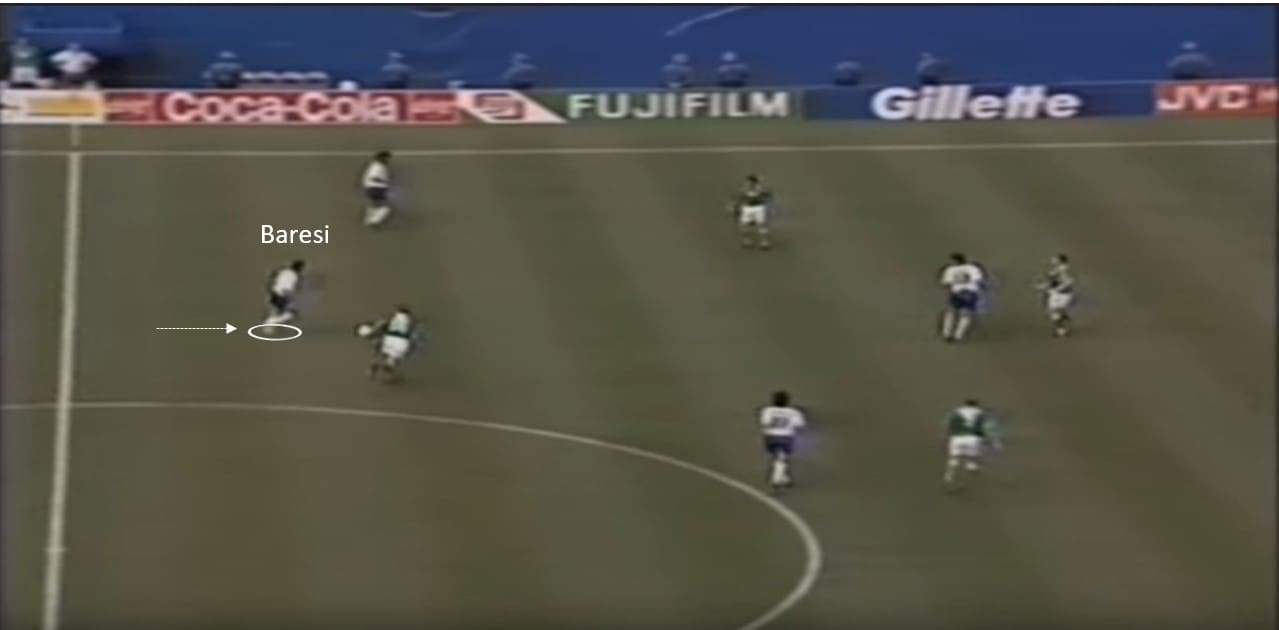
Whilst Sacchi stayed faithful to this offensive philosophy through the World Cup, the same cannot be said about defensive tactics. In fact, the high temperatures teams faced in the USA forced Italy too to change their defensive approach. Although Sacchi initially planned to repeat his favourite high pressing tactics, it was clear that weather conditions required something different.
So, high pressure was given up from time to time, in favour of a more cautious approach in which the Italian side came back to defend in a 4-4-2 with two banks of four or through a variable which included a deep 4-5-1 formation.
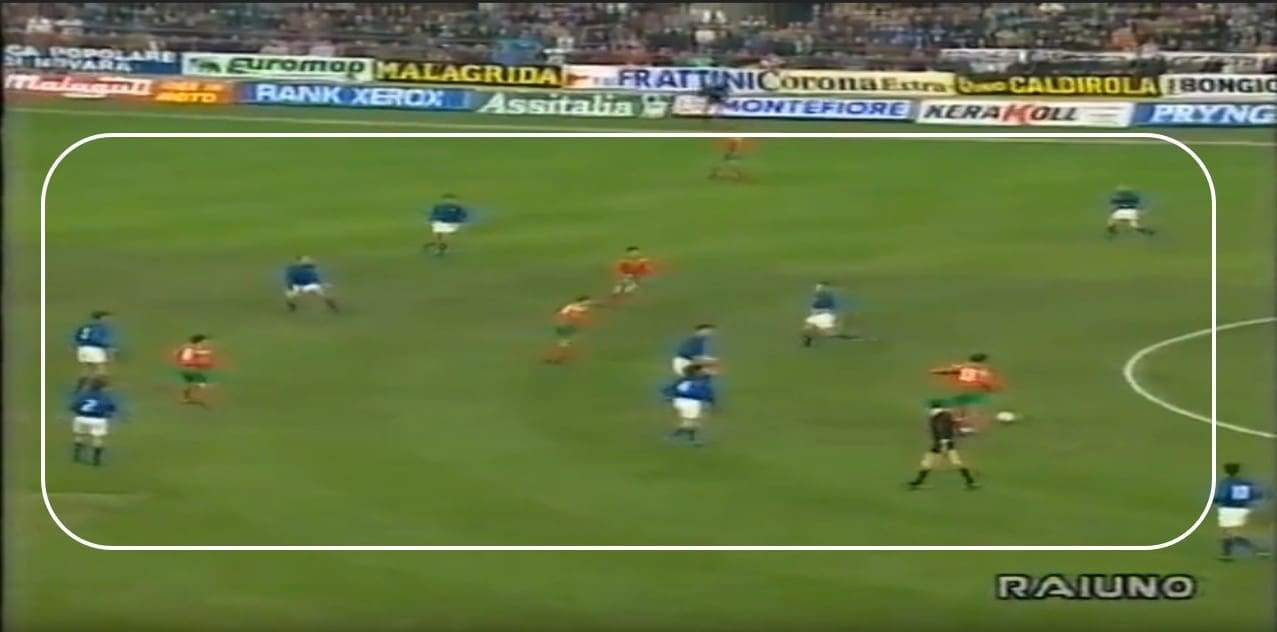
This whole structure, both defensively and offensively, often taken a back seat when analyzing the 1994 World Cup with the main focus being just on Roberto Baggio’s individual effort. Instead, as the same Sacchi told, it was a collective play started in their own territory, followed by a change of play and by full-back Roberto Mussi overlapping on the right side that has led to Roberto Baggio’s equalizer against Nigeria in the latest minutes of the game.
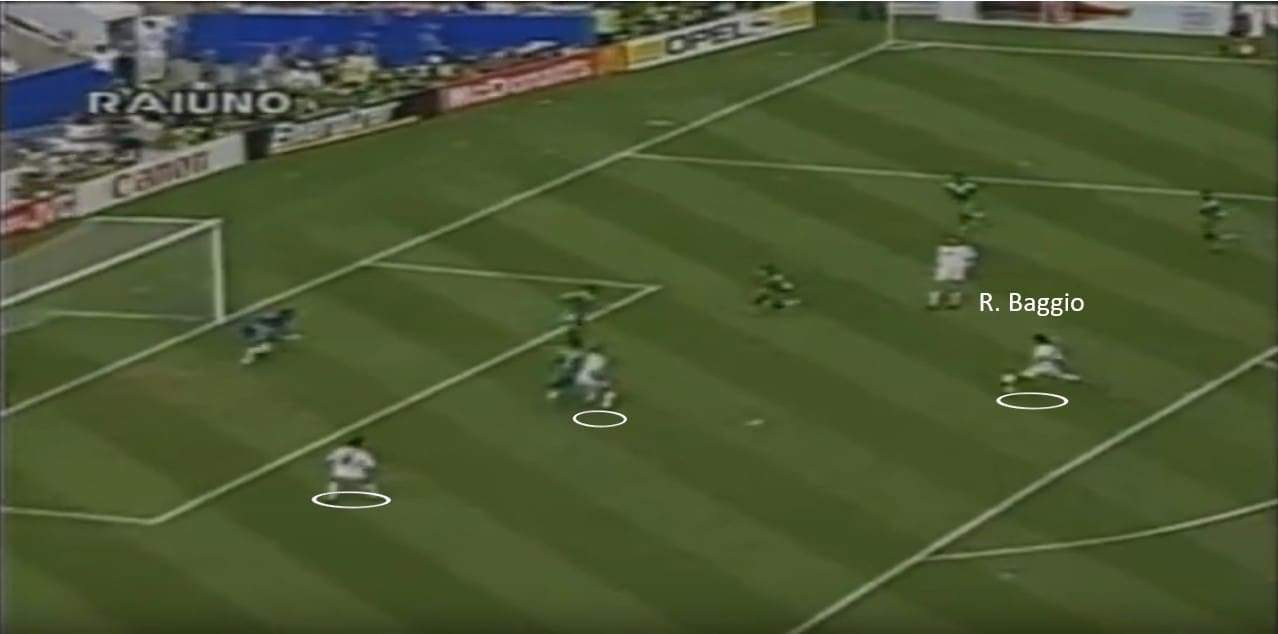
To better understand Sacchi’s way, you can make a comparison with Argentina’s Jorge Sampaoli during the 2018 FIFA World Cup. Sampaoli built a team strongly relying on Lionel Messi who became the key point on Argentina’s offence. It means that Messi was charged with the duty to solve any Argentina’s offensive problems while his teammates had to adapt their play to no.10’s position.
Sacchi’s approach was different: he never asked a single player to lead his team, not even Ruud Gullit or Marco van Basten at AC Milan. According to Sacchi, a player is part of a structured side in which his individual skills can flourish.
Conclusion
Staying faithful to his tactical principles that favour team’s shape over-dependence on one player, the resounding decision Sacchi made against Norway is now conceivable. During this crucial group stage game, Italy was forced to play one man down due to the fact their goalkeeper Gianluca Pagliuca was sent off following a ball handled outside the box to fix a mistake Italian backline committed trying the offside trap.
In the few seconds following Pagliuca’s ejection, with backup keeper Luca Marchegiani ready to step up, Sacchi decided to withdraw Roberto Baggio, retaining Casiraghi and Signori on the field, citing he “needed nine running players.” This courageous and highly unpopular move paid off as Italy went able to produce a pivotal 1-0 win.
The rest is history. Despite having team’s captain Baresi facing a knee injury, Sacchi was able to reshape his backline by moving left-back Paolo Maldini in the middle and lining up Mauro Tassotti, Mussi and Antonio Benarrivo as full-backs. Then, Baresi went back to play the final against Brazil, with Italy able to maintain the clean sheet until the penalty shootout.
If you are interested in a more recent World Cup and our analysis of it, check out our pieces on how Spain failed, the importance of Olivier Giroud, England’s use of set-pieces, and how England diffused Sweden‘s biggest threat.





Comments